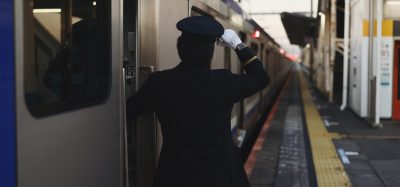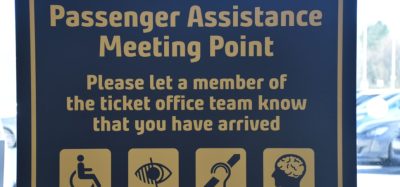Rail safety initiatives on the right track
Posted: 1 August 2008 | | No comments yet
As Network Rail carries out its ambitious plans for Britain’s growing railway, keeping the railway safe remains one of the top priorities. Indeed, there is no other form of transport safer than rail and Network Rail is determined to maintain this record – not only for passengers, but for the people who work on the tracks, night and day, delivering a safe, reliable and efficient network.
As Network Rail carries out its ambitious plans for Britain’s growing railway, keeping the railway safe remains one of the top priorities. Indeed, there is no other form of transport safer than rail and Network Rail is determined to maintain this record – not only for passengers, but for the people who work on the tracks, night and day, delivering a safe, reliable and efficient network.
As Network Rail carries out its ambitious plans for Britain’s growing railway, keeping the railway safe remains one of the top priorities. Indeed, there is no other form of transport safer than rail and Network Rail is determined to maintain this record – not only for passengers, but for the people who work on the tracks, night and day, delivering a safe, reliable and efficient network.
With billions of pounds worth of investment going into the many large scale schemes to accommodate the rising passenger numbers, Network Rail is committed to carrying out this work safely. This often requires a high degree of detailed organisation to coordinate the hundreds of track workers employed by Network Rail and our contractors who could be on an engineering site at any one time, along with engineering train movements, cranes and heavy machinery creating a complex industrial site fraught with potential dangers.
The Management of Health and Safety at Work Regulations 1999 requires Network Rail and our contractors working on the railway to carry out suitable and sufficient risk assessments to understand the potential affects of what we do on the workforce, including personnel from the train and freight operators, passengers and the public. But keeping many track workers aware of the safety risks presents quite a challenge – a challenge we are taking very seriously.
With safety briefings held at hundreds of depots across the country every day, a well coordinated and innovative campaign was needed to engage with all track workers to make them aware of the risks and work safely, not only to protect themselves, but the safety of their industry colleagues (in the widest sense) and all rail users.
The Safety 365 campaign aims to meet this challenge. With a coherent and effective strategy uniting all safety messages under a single brand, the campaign promotes key themes for safety for everyone who works on the railway.
Until the campaign was launched in 2005 there was no single vehicle for promoting track worker safety on the railways. As a consequence, safety communications were fragmented and often confusing, and a more coordinated approach was necessary.
The plan included producing simple, visual messages within a co-ordinated campaign to address specific and general sources of safety risk, with an innovative mix of media and production methods to create the right kind of impact. Tone, style and language were important elements in order to make the messages appropriate for the audience.
We were determined to make the campaign as engaging as possible and communicate it in a language that would resonate with our people. Safety 365 needed to cut-to-the-chase, and be both believable and memorable, with the emphasis on exciting and engaging our people rather than boring them into submission.
The approach was simple. Create a campaign, give it an identity, and then create the content in detail. The content was then given the appropriate tone, using the right colours, font and words for message and impact. Fluorescent colours, stencilled type, and a battered and bruised believability to the posters, banners and logos meant that this campaign could not be for anyone other than its intended audience on the front line.
The corporate tone became conversational, and the “so-what” transformed into the “sit-up”, as the campaign was engineered to be robust – and more importantly persuasive – enough to cope with the multitude of messages needed by the organisation to promote awareness of key risk areas and how our people should best go about their business and stay safe.
From 60ft fluorescent training trucks to headline-grabbing films, in your face design to thoughtful, structured trainer support, Network Rail’s commitment to safety communication has been reinvented, and Safety 365 is rapidly becoming the de-facto standard across the entire rail industry.
It is an approach that has proved successful so far, resonating strongly with an overwhelming majority of employees – in some cases generating approval ratings upwards of 90% – and one that’s changing behaviours in order to reduce the number of incidents, and ultimately saving lives.
Safety issues were broken down into a family of sub campaigns dealing with ‘issue sets’ around key risk areas, including slips, trips and falls, manual handling, personal protective equipment, drugs and alcohol, occupational diseases, safety communications, and safe driving in order to deal with the extensive range of messaging required.
The messages are rolled out across a wide range of different places including posters, ice scrapers, booklets, key cards, hard hats, water bottles, magnetic boards for recording accident free periods, Z cards, desktop tent cards, stickers and six branded safety trucks.
The campaign has proved a roaring success, getting the safety messages across to those who need it in the right way. Independent surveys have shown that at least 80% of the maintenance workforce can recall seeing each of the 365 campaigns.
Over 70% of our staff believe that safety communications have changed the way they think about safety, and changed the way they do their job, and 92% of staff now feel they are responsible for performing their job safely. Nearly three-quarters of those who give safety briefings believe safety is better communicated now than two years ago – testament to how well the campaign has worked, changing attitudes and behaviours, reducing incidents and ultimately saving lives.
A major part of the initiative is constantly monitoring how effectively safety being managed across our various worksites and the 365 Day Challenge was set up to underpin the campaign. The challenge helps to recognise and reward the progress our teams are making, throughout the company, by measuring how many days each team has managed to go without a reportable injury as defined by the Reporting of Incidents Diseases and Dangerous Occurrences Regulations (RIDDOR).
The Safety 365 Day Challenge helps increase the profile of our safety performance, and, by introducing goals that are tangible, reinforces the message that we must all take our own safety and that of our colleagues seriously. All employees lead by example and need to demonstrate the right behaviours and attitudes as we work to prevent accidents and do the job safely.
The rewards of reaching 365 days without an accident have ranged from simple gifts to award ceremonies at Stamford Bridge and the Emirates stadiums. The Chief Executive and our most senior directors attend the awards whenever possible in order to demonstrate top level commitment.
However, the campaign is not just about prizes, it is about getting people think about safety 365 days a year. These initiatives have made a powerful contribution to improving safety standards, and forms just one of a range of efforts undertaken by Network Rail.
Another key element promoting health and safety on the railway is the Sentinel card system. How we communicate messages using campaigns such as Safety 365 plays an important part, but being able to check who should and who shouldn’t be on the track, particularly during a major scheme when hundreds of workers can be on site at any one time, is vital.
Introduced in 1999, the Sentinel card is a simple and secure way to check that everyone working on the railway has completed the relevant training and qualifications. When track workers report to site, they just simply need to present their card – if they don’t have a card, they won’t be allowed to work.
A simple process is in place to check that any maintenance, renewals or enhancement work is being carried out by properly trained people with the right skills, safely at all times, and that their competencies are current.
Some 250,000 personnel have been through the Sentinel scheme since its introduction and there are currently around 100,000 track workers, of which around 21,000 are directly employed by Network Rail. With this number set to rise further as we increase the amount of investment it is putting into renewals and upgrade work, having a secure system that can be used to carry out checks quickly is crucial for the safe delivery of improvements.
The Sentinel scheme works by issuing a competence card to those who have completed the relevant training, and have the right skills and experience as well as the qualifications needed to work safely on the railway. These cards are uniquely numbered and contain a photograph of the cardholder as an extra security measure to prevent it from being passed on to others. Everyone working on the track needs to have the card with them at all times and will not be able to access the track without it.
The fact that there have been no known recorded incidents of the fraudulent use of the card since it was introduced is testament to how well the scheme has been policed and the card has proven itself as an effective means of improving both security and safety standards on the railways by validating the eligibility and competency of people working on our network.
We are continuously looking to develop new schemes that excite and engage the workforce to do the right things and to use a variety of media to make our safety management system come to life. But the mind and body will both have an effect on how people do their job and their ability to do it safely. Using the same kind of media as Safety 365, the brand has been adapted to include healthy living messages as part of our Health 2008 campaign to encourage our people to take personal responsibility for their general health and wellbeing.
Safety will forever remain a major issue for the railway, and rightly so. As we continue our work to expand and renew the railway, safety will remain a top priority. The Sentinel card scheme and the Safety 365 initiatives have both played an important role in improving safety standards and have helped foster a culture that gives safety the attention it deserves. We will continue to develop our range of safety policies and procedures and communicate them in a way that resonates with all those who are working to maintain and improve Britain’s railways, whether it’s working on the track or in a station or office, both in-house and contractor alike.








